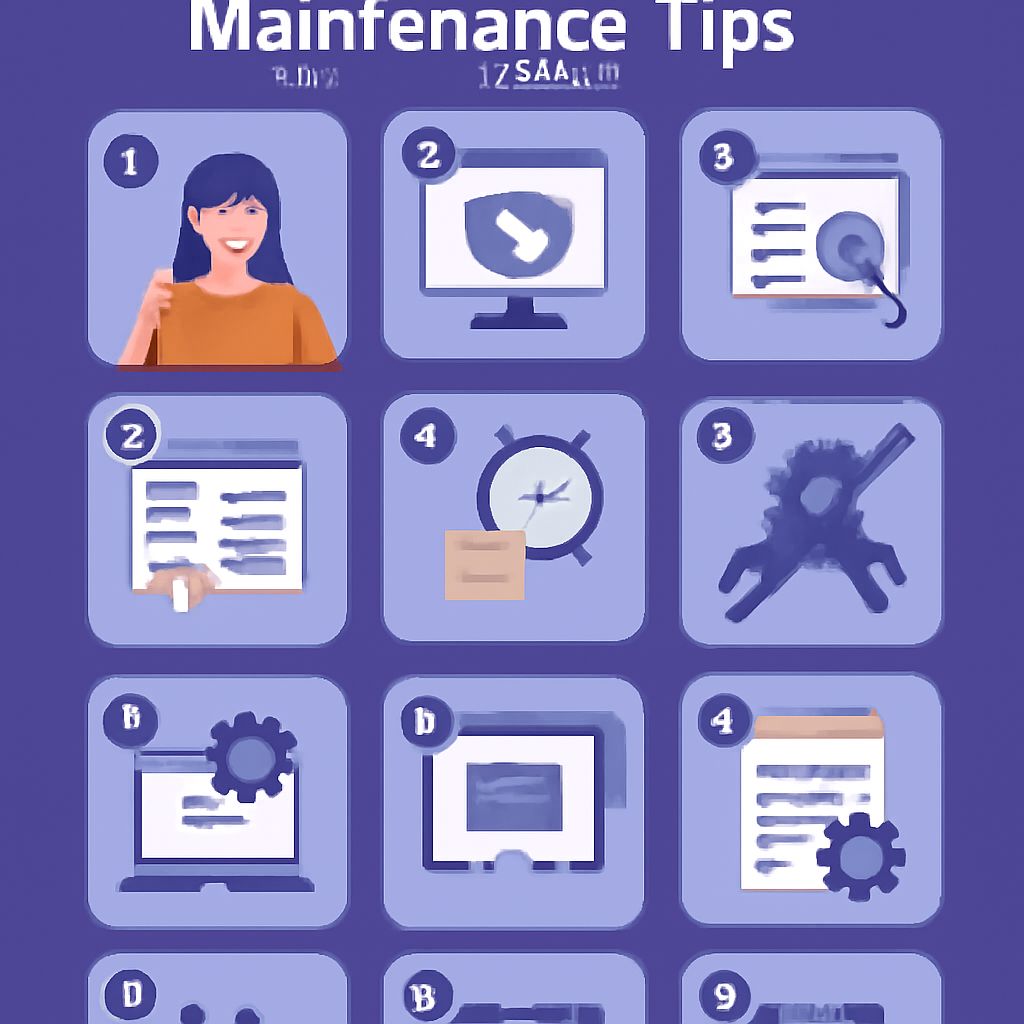Why Every Designer Needs a Website Maintenance Plan in 2025
Discover the essential reasons why every designer should implement a website maintenance plan in 2025 to ensure optimal performance and security.

Table of Contents
Why Every Designer Needs a Website Maintenance Plan in 2025
As we move further into 2025, the digital landscape becomes increasingly competitive and complex. For designers, having a striking portfolio website is essential, but it’s not just about creating a beautiful site. It’s also about ensuring that it functions smoothly and stays up-to-date. A website maintenance plan is a vital component of any designer’s strategy. This article explores the reasons why designers need a website maintenance plan, the critical components of such a plan, and how to implement it effectively.
The Importance of a Website Maintenance Plan
A website maintenance plan is a set of strategies and actions aimed at keeping a website operational, secure, and up-to-date. Here are some compelling reasons why every designer should consider implementing a maintenance plan:
1. Security
Cybersecurity threats are on the rise, and websites are prime targets for hackers. A maintenance plan includes regular software updates, security patches, and backups to protect your site from potential vulnerabilities.
2. Performance Optimization
As technology evolves, user expectations for website speed and performance increase. Regular maintenance can help optimize loading times, ensuring a better user experience and improved SEO rankings.
3. Content Updates
Keeping content fresh and relevant is essential for engaging visitors. A maintenance plan facilitates regular updates to your portfolio, case studies, or blog posts, helping to showcase your latest work and ideas.
4. Compatibility and Compliance
Web standards and technologies change constantly. Regular updates ensure that your site remains compatible with new browsers, devices, and regulations, such as GDPR.
5. Technical Support
Having a maintenance plan means you have a reliable system in place for troubleshooting issues as they arise, minimizing downtime and ensuring that your site remains operational.
Components of a Website Maintenance Plan
A comprehensive website maintenance plan should include several key components. Here’s a breakdown of what to include:
1. Regular Backups
Automated backups ensure that you always have a recent copy of your website data. This is essential for recovery in the event of a data loss incident.
2. Software Updates
Maintain all software used on your website, including the content management system (CMS), plugins, and themes. This protects against security vulnerabilities and ensures optimal performance.
3. Security Scans
Regularly conduct security scans to identify vulnerabilities or potential threats. Tools like Sucuri and Wordfence can help automate this process.
4. Performance Monitoring
Utilize tools like Google PageSpeed Insights or GTmetrix to monitor website performance. Regular assessments can help you identify areas for improvement.
5. Content Management
Schedule regular intervals for updating and adding new content, ensuring that your portfolio reflects your most recent work and skills.
6. Analytics Review
Regularly review analytics to understand visitor behaviors, traffic sources, and engagement metrics. This information can guide future design and content decisions.
How to Implement a Website Maintenance Plan
Once you understand the importance and components of a website maintenance plan, it’s time to implement it. Here’s a step-by-step guide:
Step 1: Define Your Goals
Start by establishing what you want to achieve with your website maintenance plan. Goals like improving security, optimizing performance, or increasing engagement will guide your efforts.
Step 2: Choose Tools and Services
Select tools for backups, security scans, performance optimization, and analytics. Many platforms offer all-in-one solutions, or you can opt for specialized software based on your needs.
Step 3: Create a Schedule
Develop a maintenance schedule that outlines when each task will be performed. This could be daily, weekly, monthly, or quarterly depending on your specific needs. Here’s a sample maintenance schedule:
| Task | Frequency |
|---|---|
| Website Backup | Daily |
| Software Updates | Weekly |
| Security Scan | Monthly |
| Performance Monitoring | Monthly |
| Content Updates | Bi-monthly |
| Analytics Review | Quarterly |
Step 4: Delegate Responsibilities
If you run a larger team, delegate responsibilities among team members to ensure that no task falls through the cracks. If you’re a solo designer, consider hiring a professional service to assist with certain aspects of maintenance.
Step 5: Document Everything
Keep thorough records of all maintenance tasks performed, issues encountered, and resolutions. This documentation is crucial for understanding your website’s history and can help in troubleshooting future problems.
Benefits of a Proactive Maintenance Plan
Investing time and resources into a maintenance plan can yield significant benefits for designers:
- Enhanced User Experience: A well-maintained site offers a seamless experience, keeping your visitors engaged.
- Increased SEO Rankings: Regular updates and optimizations can boost your search engine visibility.
- Time Savings: Proactive maintenance can prevent larger issues that require more time-consuming fixes.
- Professional Image: A polished, up-to-date website conveys professionalism and care for your brand.
Conclusion
In 2025, having a stunning website is just the beginning for designers. A robust website maintenance plan is essential for ensuring security, performance, and relevance in the fast-paced digital world. By defining goals, utilizing the right tools, creating a maintenance schedule, and documenting processes, designers can keep their online presence thriving. Ultimately, the investment in a maintenance plan pays off through enhanced user experience, improved SEO, and a reinforced professional image. Don’t overlook the importance of website maintenance—make it a priority today!
FAQ
Why is a website maintenance plan essential for designers in 2025?
A website maintenance plan is crucial for designers in 2025 to ensure their portfolio remains updated, secure, and functional, enhancing user experience and improving search engine rankings.
What are the key components of a website maintenance plan for designers?
Key components typically include regular updates to software and plugins, content updates, backups, security checks, and performance monitoring to ensure optimal functionality.
How often should designers update their website?
Designers should aim to update their website at least once a month, but more frequent updates are recommended for content changes or security enhancements.
What are the risks of not having a website maintenance plan?
Without a maintenance plan, a designer’s website could become vulnerable to security threats, suffer from broken links or outdated content, and ultimately lead to a poor user experience.
Can a website maintenance plan improve a designer’s online visibility?
Yes, regular maintenance can improve a designer’s online visibility by ensuring that the website is optimized for search engines, which can lead to higher rankings and increased traffic.
Is it worth investing in professional website maintenance services for designers?
Investing in professional website maintenance services is often worth it for designers, as it allows them to focus on their creative work while ensuring their website remains in top condition.








